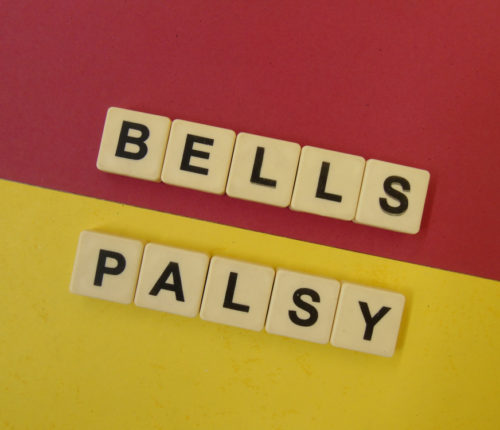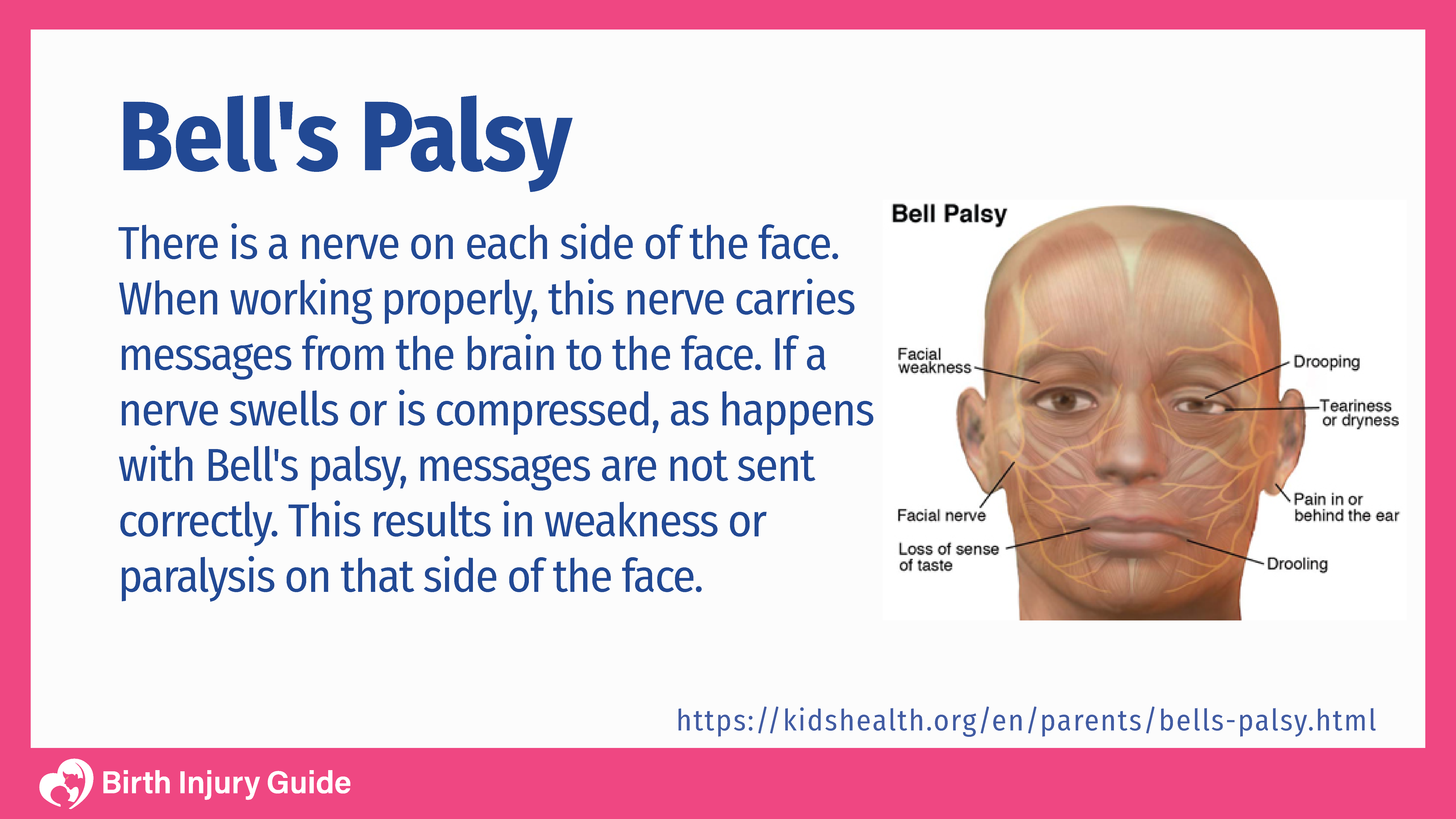
Infant Bell’s Palsy
Bell’s palsy is defined as paralysis or weakness on one side of the face. Although not typically a long-term condition, it can lead to serious health complications. It is important that parents know the risk factors and symptoms of infant Bell’s palsy, and when it’s time to contact a healthcare provider.
What is Bell’s Palsy?
Bell’s palsy is a sudden loss of sensation and muscle control on one side of the face. When the facial nerves become inflamed, they cannot properly send messages to the corresponding facial muscles. It is more common in adults than children, but infant Bell’s palsy does happen.

What Causes Bell’s Palsy?
Most cases of infant Bell’s palsy are the result of congenital factors or birth trauma. Recent studies suggest that Bell’s palsy can be caused by the herpes virus or by cold sores, and that the virus is passed onto the baby from a maternal infection. It can also be caused by Epstein-barr virus or influenza (the flu).
In terms of birth trauma, some of the causes of Bell’s palsy may include:
- Forceps-assisted delivery
- Prolonged labor
- Infant is large for gestational age
Can Bell’s Palsy Be Prevented?
It is the doctor’s responsibility to make sure that the herpes virus and other maternal infections are not passed from the mother to the baby. Doctors should also carefully monitor infants who have diabetes or a viral cold or infection. Children who have diabetes or a virus are more at-risk for developing Bell’s palsy. Recognizing the risk factors and carefully monitoring the child is the best way of preventing Bell’s palsy.
Start Your FREE Case Review Today
If you or your child is injured as a result of medical negligence, call us to learn more.
Bell’s Palsy Symptoms
The symptoms of Bell’s palsy are usually obvious, including a droopy eyelid or paralysis to the facial muscles. Other symptoms can include:
- Weakness on the affected side of the face
- Excessive tearing or excessively dry eyes
- Difficulty smiling
- Difficulty closing the affected eye
- Increased ear sensitivity, specifically to sound
- Drooling
- Loss of or decreased sense of taste
- Headache
Tests to Confirm Diagnosis
The symptoms of Bell’s palsy are pretty clear, and your physician can usually spot the symptoms right away. Your doctor can order tests like a CT scan or MRI, which can show if there is inflammation or other pathology in the brain that could explain the symptoms of Bell’s palsy. An Electroencephalogram (EEG) can also test the electrical and neurological movement within those nerves to be sure that the nerves are functioning properly and that they’re communicating signals effectively.
Bell’s Palsy Treatment
The most common treatment for infant Bell’s palsy is corticosteroid treatment. Corticosteroids reduce swelling and inflammation of the facial nerves. If your child’s condition is due to a viral infection, your doctor may also prescribe an antiviral medication to treat the infection as well.
If your child has a difficult time closing their eye, he or she may need an eye patch to protect their eye. Eye drops are also often recommended to help prevent dryness and irritation.
Prognosis for Bell’s Palsy
Most cases of Bell’s palsy are not permanent. Mild cases generally resolve within one or two months. Severe cases can cause permanent weakness and nerve damage in the affected area of the face, though movement to the face will generally return. In addition, severe cases may also damage the eye on the affected side of the face, leading to sharp eye pain, blurred vision, or sometimes blindness.
If Bell’s palsy affects the eyelid, your child may not be able to blink, which can cause dryness, pain and damage to the eye. It’s important to discuss treatment options with your doctor, especially if your baby is tugging at and trying to scratch the affected eye. If your baby’s eye is extremely dry, artificial tears may be recommended.
How to Optimize Your Child’s Prognosis
Bell’s palsy can be frustrating for your child. He or she may have difficulty blinking, eating or performing daily tasks. Older children especially find the condition stressful and frustrating, especially if they are school-age. The good news is that the prognosis for Bell’s palsy is generally favorable. As your child heals, there are also some things you can do to help optimize his or her prognosis:
- Give your child love and support as he or she heals.
- Realize that this condition is frustrating and may cause your child to be irritable.
- Protect your child’s eye as best as possible. Use a patch or sunglasses.
- If your doctor orders physical therapy, work with therapists and support their efforts at home.
- Talk to your child (if applicable) about the recovery process.
If you notice any worsening of symptoms or other complications, make sure you talk to your child’s doctor about the diagnosis and what to do next.



